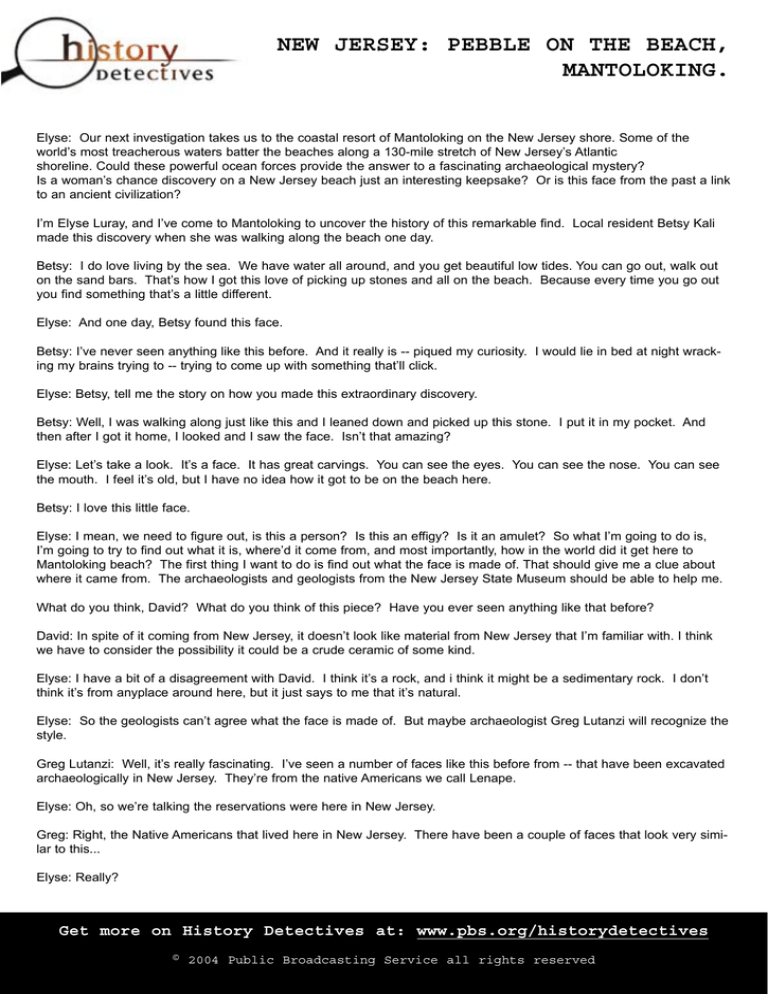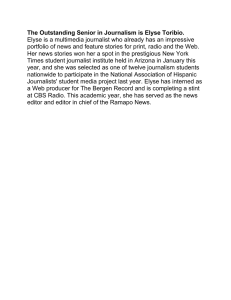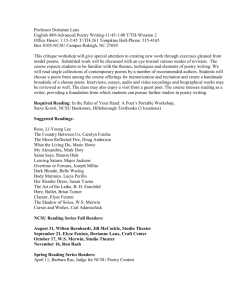
NEW JERSEY: PEBBLE ON THE BEACH,
MANTOLOKING.
Elyse: Our next investigation takes us to the coastal resort of Mantoloking on the New Jersey shore. Some of the
world’s most treacherous waters batter the beaches along a 130-mile stretch of New Jersey’s Atlantic
shoreline. Could these powerful ocean forces provide the answer to a fascinating archaeological mystery?
Is a woman’s chance discovery on a New Jersey beach just an interesting keepsake? Or is this face from the past a link
to an ancient civilization?
I’m Elyse Luray, and I’ve come to Mantoloking to uncover the history of this remarkable find. Local resident Betsy Kali
made this discovery when she was walking along the beach one day.
Betsy: I do love living by the sea. We have water all around, and you get beautiful low tides. You can go out, walk out
on the sand bars. That’s how I got this love of picking up stones and all on the beach. Because every time you go out
you find something that’s a little different.
Elyse: And one day, Betsy found this face.
Betsy: I’ve never seen anything like this before. And it really is -- piqued my curiosity. I would lie in bed at night wracking my brains trying to -- trying to come up with something that’ll click.
Elyse: Betsy, tell me the story on how you made this extraordinary discovery.
Betsy: Well, I was walking along just like this and I leaned down and picked up this stone. I put it in my pocket. And
then after I got it home, I looked and I saw the face. Isn’t that amazing?
Elyse: Let’s take a look. It’s a face. It has great carvings. You can see the eyes. You can see the nose. You can see
the mouth. I feel it’s old, but I have no idea how it got to be on the beach here.
Betsy: I love this little face.
Elyse: I mean, we need to figure out, is this a person? Is this an effigy? Is it an amulet? So what I’m going to do is,
I’m going to try to find out what it is, where’d it come from, and most importantly, how in the world did it get here to
Mantoloking beach? The first thing I want to do is find out what the face is made of. That should give me a clue about
where it came from. The archaeologists and geologists from the New Jersey State Museum should be able to help me.
What do you think, David? What do you think of this piece? Have you ever seen anything like that before?
David: In spite of it coming from New Jersey, it doesn’t look like material from New Jersey that I’m familiar with. I think
we have to consider the possibility it could be a crude ceramic of some kind.
Elyse: I have a bit of a disagreement with David. I think it’s a rock, and i think it might be a sedimentary rock. I don’t
think it’s from anyplace around here, but it just says to me that it’s natural.
Elyse: So the geologists can’t agree what the face is made of. But maybe archaeologist Greg Lutanzi will recognize the
style.
Greg Lutanzi: Well, it’s really fascinating. I’ve seen a number of faces like this before from -- that have been excavated
archaeologically in New Jersey. They’re from the native Americans we call Lenape.
Elyse: Oh, so we’re talking the reservations were here in New Jersey.
Greg: Right, the Native Americans that lived here in New Jersey. There have been a couple of faces that look very similar to this...
Elyse: Really?
Get more on History Detectives at: www.pbs.org/historydetectives
© 2004 Public Broadcasting Service all rights reserved
NEW JERSEY: PEBBLE ON THE BEACH,
MANTOLOKING.
Greg: ...that have been excavated.
Elyse: You know, that makes so much sense to me. I wasn’t even thinking Native American because I was
Thinking it looked a little bit more tribal or African. But that’s a great lead for me to start with, the Lenape
Indian. Now we’re getting somewhere. Our little face was found in New Jersey where the Lenape tribe came
From, so it really could be a Lenape artifact. I’m going to meet one of the country’s leading experts on the Lenape
tribe. Archaeologist John Craft has an unparalleled collection of Lenape artifacts. Can you tell me a little bit about the
Lenape?
John Craft: Oh, the Lenape people, they were wonderful people. They’ve been -- well, their ancestors lived here almost
12,000, from 12,000 years ago and they were the people here that met some of the early explorers that came to this
country like Verrazano, Henry Hudson, people like that. And they made all kinds of wonderful artifacts that we find, as
archaeologists. We still find these all over the place, including beautiful little masquettes like this.
Elyse: This is great. John, you know, our face was found on the coast of Mantoloking, New Jersey. Is there any evidence of any settlements of the Lenape around that area?
John: Mantoloking, sure. I think you can see that there are many different villages. They never called it New Jersey.
They called it Lenape Hocking, or Land of the Lenape.
Elyse: Wow, there’s a lot.
John: Sure, and some of the names are familiar. You might have heard of the Manhattans or the Canarsees or the
Raritans, the Tappans, the Hackensacks. These are all Lenape terms. We do find artifacts and they’ve been all along
the shore here. So absolutely, it doesn’t bother me at all finding this thing in Mantoloking. The kind of face we usually
find is something very simple like you see here.
Elyse: But take a look at this one, this one here. You can see it’s a lot more detailed, you see? On this one here, they
made very realistic-looking lips and nose on that one. You know,
It’s interesting, all three of these, the shapes of the heads are kind of really similar.
John: Yeah.
Elyse: The real identity of our mysterious little friend seems to be emerging. Then John takes a closer look.
John: I do want to take a look at this because I just saw something that looked a little off. What bothers me about this
part here, it looks like the figure actually had a neck. Normally we find just the face, the masquette. This little guy here
looks like he might have been on some kind of a figure, and I’m not sure. I would love to think that it is a Lenape. it
would be something really good. It would be something really unique. It’s just the neck’s throwing me off.
Elyse: John’s uncertainty is a setback. I need to take a more scientific approach. If I can find out what our face is
made of, I will have a better chance of finding out where it’s from. A test called a petrographic thin section should determine If it’s made of stone or clay. I’m taking the face to Lenny Canonay, one of the few remaining thin section makers in
the country.
Lenny Canonay: I can see why it’s giving you trouble, it’s very interesting because certain parts of the figure look like
sandstone, this textured surface. And then you have this very clear surface up here, which does look like pottery.
Elyse: It’s a very risky procedure, because Lenny has to cut a sample from the face using a diamond-blade saw. Held
in place by a vacuum, the sample is reduced of a human hair using a diamond grind wheel. Once a thin section is ready,
Lenny can examine it under a polarizing light microscope, and then he should be able to tell me for certain what the little
guy is made of. Okay, so what are we looking at?
Lenny: Given the mineral assemblage and the, quote, exotic minerals, the purexines and the amphiboles, that would
Get more on History Detectives at: www.pbs.org/historydetectives
© 2004 Public Broadcasting Service all rights reserved
NEW JERSEY: PEBBLE ON THE BEACH,
MANTOLOKING.
tend to rule out sandstone.
Elyse: So if it’s not sandstone, does that mean our face is made of clay?
Lenny: This is, in fact, fired pottery. It’s clay.
Elyse: I’ve learned something. The face is made of clay. So now, I’m going to go see a ceramic expert so she can
examine the thin section and hopefully tell me where the face is from. The jury’s still out on whether our face is Lenape
or not. After all, they produced a lot of clay objects. First, our expert, Mary Hopkins, must try to date the clay.
Mary Hopkins: It’s got some hematite staining in the matrix, those big red blotches that don’t have clear outlines.
Elyse: These?
Mary Hopkins: Uh-huh. But it’s also got a couple of big pieces of quartz in it which are things that we don’t find in the
modern clays. This thin section, I’m quite convinced, belongs to the ancient ceramics.
Elyse: Now that Mary’s got the date, she’s going to analyze the makeup of the clay to work out where it comes from.
Mary: These guys that look like lozenges are hornblende.
Elyse: Hornblende.
Mary: Yeah.
Elyse: What’s this?
Mary: It’s an iron-rich glass with some little bits of feldspar in it. Just looking at it says, yeah, it’s probably either from the
Teotihuacán Valley or from someplace real close.
Elyse: Whoa, Teotihuacán! So our little face is an exotic foreigner. I do know that Teotihuacán was an ancient preAztec civilization in what is present-day Mexico, but that’s about all I know.
Elyse: I’m back on the beach at Mantoloking with Dr. Warren Barber, an expert on Teotihuacán. He tells me that 2,000
years ago it was the sixth largest city in the world, famous for its pyramids and temples. But can he tell me what the
face was used for? So here’s the face. Have you seen it before?
Warren Barber: Yes. This -- this is a typical Teotihuacán figurine-type called a portrait figurine. And you have an excellent little -- you have a very nice little head here. The original figurine would have been 7cm in height with one arm back
and one arm forward, as though it were an individual holding a shield. From the way it’s manufactured, I would guess
that it was made between 200 AD. and 300 AD.
Elyse: It’s that old?
Warren: Yes, Yes, yes.
Elyse: Oh, wow. So this piece is almost 2,000 years old?
Warren: Yes.
Elyse: Now, how do you know that it’s Teotihuacán?
Warren: I brought some examples for you to look at.
Get more on History Detectives at: www.pbs.org/historydetectives
© 2004 Public Broadcasting Service all rights reserved
NEW JERSEY: PEBBLE ON THE BEACH,
MANTOLOKING.
Elyse: Wow, look at all of these. Incredible!
Warren: Those look familiar?
Elyse: Let’s put mine down. I hope she doesn’t get lost in these. Wow! They’re so similar, you see, even the size of the
heads, the proportion at the top and the bottom. So tell me, what were these used for?
Warren: The vast majority of all figurines were used in household ritual. They were very much like a rosary, very specific
to a particular religion.
Elyse: Have any of these ever been found in America before? Is it rare to find these?
Warren: I can only think of one other one that was found in Central Park, picked up in Central Park, and taken to the
American Museum of Natural History for identification, about 1982.
Elyse: I now know what it is and where it came from, but there’s still one burning question. How did the face get here to
Mantoloking beach, New Jersey? Betsy’s face was found on the beach. Maybe it just washed ashore sometime over
the past 2,000 years. But how? Could the little face have come from a ship that wrecked off the Atlantic coast? John
Killeen is an environmental archaeologist with the U.S. Army Corps of Engineers. He maintains the Federal Channels
for Navigation off the Jersey coast, and he’s also an authority on shipwrecks. Were there a lot of shipwrecks around
here in New Jersey?
John Killeen: There were hundreds of shipwrecks in the last, say, 100 to 200 years off the coast of New Jersey.
Elyse: If Betsy’s face came from a shipwreck, how do you think it got onto the shore?
John: It could have been due to a storm. And successive storms could have moved the artifact around closer and closer
to the shore, and then finally, one last storm could have just pushed it right up on to shore.
Elyse: You know, John, the face comes from Mexico. So do you know of any ships that might have come from around
Central America that came up through this area that wrecked around here?
John: Right. There was one by the name of the “Vizcaya” that went down in around 1890 that made frequent trips back
and forth from Central and South America to New York and other places.
Elyse: The “Vizcaya” carried general cargo between Mexico, New York, and Cuba. She went down in rough seas just off
the shore at Mantoloking, with only 12 survivors. Maybe one of the sailors aboard had taken our little face as a talisman.
So we could say that Betsy’s face came from a ship like the “Vizcaya” or the “Vizcaya” when it went down in 1890 and
washed up on the shore.
John: Absolutely. That it came from a shipwreck is the strongest possibility.
Elyse: So now I know that Betsy’s little face is almost 2,000 years old, originally the head of a Teotihuacán portrait figurine. The road to this discovery had lots of twists and turns. At first, I was convinced that it was from the native American
Lenape culture. But Lenny’s thin section and Mary’s clay analysis eventually ruled this out. I’m speculating that the face
made its long journey to the beach in New Jersey by washing ashore after a 19th-century shipwreck. Time to tell Betsy
the news.
Elyse: Okay, Betsy, this is the moment. I have all the answers. Now, at first we thought maybe it would be Lenape. It’s
not. It’s actually much older.
Betsy: Really! Wow.
Elyse: This face is actually over 2,000 years old.
Get more on History Detectives at: www.pbs.org/historydetectives
© 2004 Public Broadcasting Service all rights reserved
NEW JERSEY: PEBBLE ON THE BEACH,
MANTOLOKING.
Betsy: No kidding! Oh, my gosh, how wonderful.
Elyse: This face is from the Teotihuacán region in Mexico, and we can place it at about 250 AD.
Betsy: Wow, that is absolutely amazing. It’s such a nice little face, too. And to think it’s kept all its little features over
2,000 years.
Elyse: And we actually believe that this face may have come from a ship, the “Vizcaya”, that sailed from New York to
Central and South America.
Betsy: “Vizcaya”…
Elyse: Uh-huh. It shipwrecked in 1890 right off the coast here.
Betsy: It just leaves me with the chills thinking about it.
Elyse: We wanted to give you a sense of the journey that your face took when it left Mexico and came up
To New York and New Jersey. This is for you. [presents map]
Betsy: Oh!
Elyse: It’s a nautical map, so you can actually see the journey that the face may have taken on a ship from Mexico,
going up to New York, and maybe shipwrecking in Mantoloking.
Betsy: That is wonderful. I can’t thank you enough. We’ll find a place. We’ll take some of these pictures off the wall and
find a very good central spot for this one. Gee, I wonder if I ought to go out and look for the body. [ laughter ]
Elyse: Good luck!
Betsy: Oh, thank you.
Elyse: We’ll never know exactly how the little face made Its 2,000-year journey from ancient Mexico onto the beach
In New Jersey. But what we do know is that for only the second time in history, a Teotihuacán head has turned up on
American soil.
ENDS
Get more on History Detectives at: www.pbs.org/historydetectives
© 2004 Public Broadcasting Service all rights reserved





